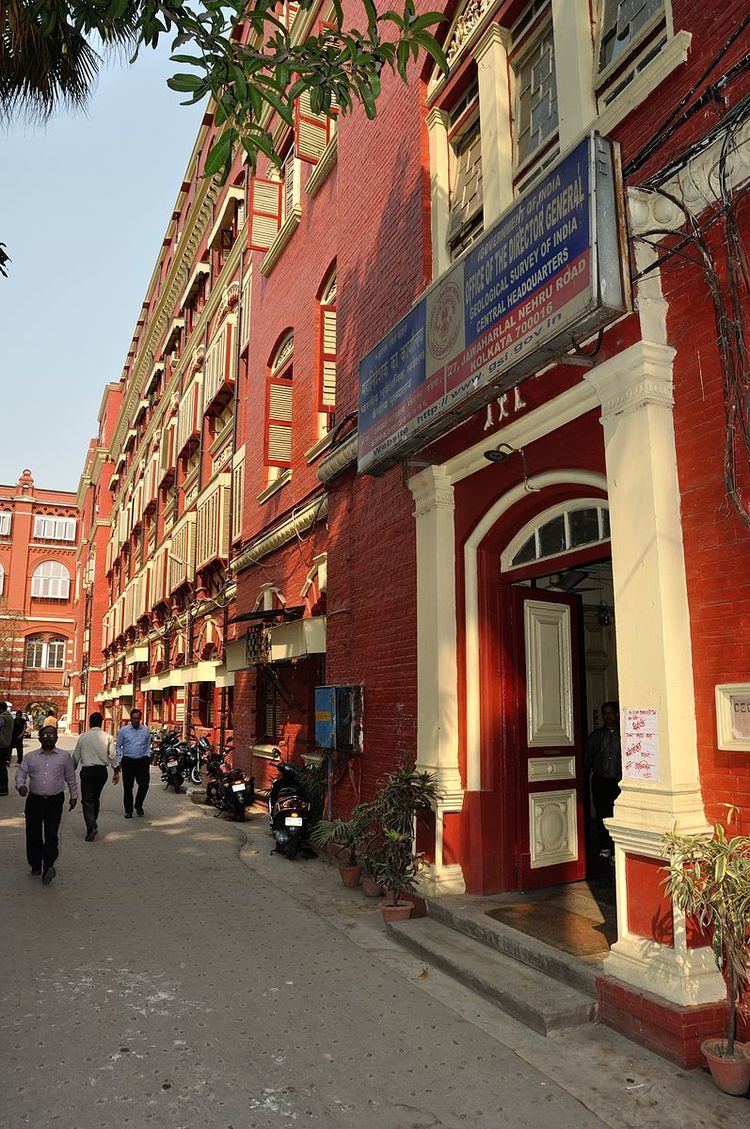Name Subimal Sinharoy Education University of Calcutta | Role Researcher | |
Role of Geological Survey of India in Landslide Hazard Mitigation
The Geological Survey of India (GSI), established in 1851, is a government organisation in India which is an office attached to the Ministry of Mines for conducting geological surveys and studies. It is one of the oldest of such organisations in the world and the second oldest survey in the country. The GSI is the prime provider of basic earth science information to the government, industry and the general public, as well as responsive participant in international geoscientific fora, the vibrant steel, coal, metals, cement and power industries.
Contents
- Role of Geological Survey of India in Landslide Hazard Mitigation
- GSI Job UPSC Exam Notification 2019 for Geologist in Geological Survey of India Geo hydrologist
- History
- Saketi Fossil Park
- Nehru Park
- National Fossil Wood Park Tiruvakkarai
- National Fossil Wood Park Sathanur
- References
GSI Job| UPSC Exam Notification-2019 for Geologist in Geological Survey of India| Geo-hydrologist
History
The roots of the Geological Survey of India may be traced in British origin to 1836 when the Coal Committee, followed by more such committees, was formed by the British East India Company to study and explore availability of coals in the eastern parts of India. David Hiram Williams, one of the first surveyors for the British Geological Survey, was appointed 'Surveyor of coal districts and superintendent of coal works, Bengal' on 3 December 1845 and arrived in India the following February. The phrase "Geological Survey of India" was first used on Williams's Map of the Damoodah and Adji Great Coal Field (Dec 1847) together with Horizontal and Vertical Sections. On 4 February 1848, Williams was appointed the "Geological Surveyor of the Geological Survey of India", but he fell off his elephant and, soon after, died with his assistant, F. B. Jones, of 'jungle fever' on 15 November 1848, after which John McClelland took over as the "Officiating Surveyor" until his retirement on 5 March 1851.

The work of the Geological Survey remained primarily exploration for coal, mainly for powering steam transport, and later oil reserves, and ore deposits. In 1852, Sir Thomas Oldham, father of Richard Dixon Oldham, broadened the ambit of the scope of functioning of the Geological Survey of India by advancing the argument with the government that it was not possible to find coal without first mapping the geological structure of India. Thus, the Geological Survey commenced to map the rock structures and strata and their age and relationships in India. Because the method of Radiometric dating wasn't developed at that time, the age of rock strata had to be estimated from the presence of index fossils, and consequently, much of the geologists' efforts were spent in finding these index fossils.
The Geological Survey of India made important contributions to seismology by its meticulous investigations and studies and detailed reports on numerous Indian earthquakes of the 19th and early 20th century. Richard Dixon Oldham, who worked for the Geological Survey like his father, first correctly identified p- and s-waves, and hypothesised and calculated the diameter of the Earth's core.
The Directors of the Geological Survey of India since its inception were as follows:
Saketi Fossil Park
Saketi Fossil Park is 5 km from Kala Amb, (its 85 km from Chandigarh, 65 km from Ambala, 22 km from Nahan, 110 km from Dehradun) There is a small fossil museum showcasing fossilised remnants (skulls, teeth, jaws etc.) of various animal groups like mammals, reptiles, fishes and esp mammals that lived around Siwalik Hills area about 2.5 to 1 million years ago. The park also displays (in open) nicely made life size fibre glass models of six pre-historic animals which roamed around Siwalik Hills area, including 18 feet tusked elephant, 3 metre giant land turtle among others.
Nehru Park
Nehru Park is located in Hyderabad, Telangana. The park displays life size figures of dinosaurs like T-Rex.
National Fossil Wood Park - Tiruvakkarai
National Fossil Wood Park in Tiruvakkarai is dedicated to wood fossils (petrified wood). The fossil trees are scattered over nine separate enclaves that cover 247 acres (1.00 km2). A small portion of the park is open to the public.
National Fossil Wood Park - Sathanur
National Fossil Wood Park, Sathanur, is located in Kunnam Taluk, Perambalur District, in Tamil Nadu. The park has a fossilised tree trunk, which was discovered in 1940 by Dr. M. S. Krishnan of the GSI. The petrified 18 meter tree trunk is believed to be over 120 million years old, and is considered to be evidence for the presence of a sea during the Cretaceous period in what is now Tamil Nadu. This national park is open to public.
